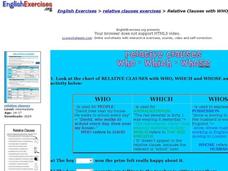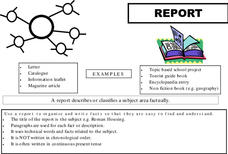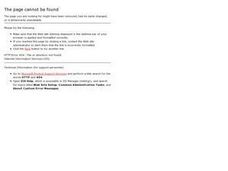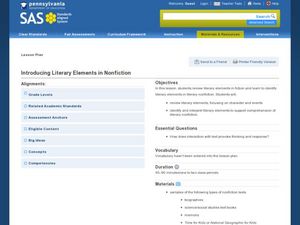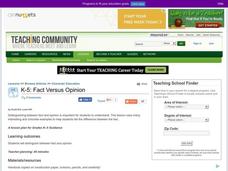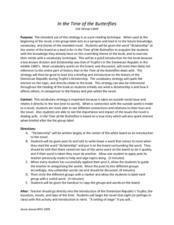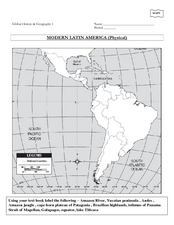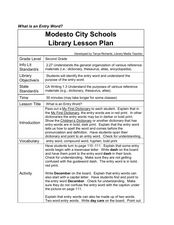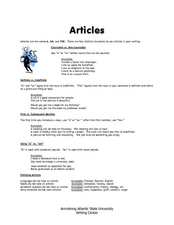Curated OER
ESL: Relative Clauses-Whose, Which, Who
Designed for English language learners, this interactive website provides practice with relative clauses. The words who, which, and whose are the focus of the two exercises provided. The first exercise asks the participant to choose...
Curated OER
Following Their Footsteps
Students research and create a book report on a famous person. In this character education lesson, students examine the positive traits exemplified by a famous person and present an oral presentation for their classmates.
Curated OER
Reading With Fluency And Expression
Practice makes perfect, and this lesson provides a rubric to prove it! To improve their ability to read with fluency and expression, readers listen to a series of online stories in order to hear how a well-read story should sound. They...
Curated OER
Non Fiction Posters
A set of very useful posters (in PDF) describing different types of non-fiction texts is here for you. While there isn't an activity, per se, in these worksheets, they could be used as a handy reference for learners who are engaging in...
Curated OER
Writing Learning Logs
Students read a book about Abraham Lincoln. Using a log, they write factual information from the book. As a class, they discuss what they believe childhood was like in the middle to late 1800s. They fill out a KWL chart before beginning...
Curated OER
Publishing Stories: Beginning, Middle, End
First and second graders explore the importance of having a beginning, middle, and end when writing stories. In this story writing instructional activity, students write short stories using the story diamond as a guide. They invite their...
Curated OER
Introducing Literacy Elements in Nonfiction
Explore nonfiction writing with your class. They will identify elements in nonfiction by reviewing elements of fiction. Then they use biographies, memoirs, menus, Time for Kids, and text books to identify elements of nonfiction. They...
Curated OER
Fact Versus Opinion
Students differentiate between fact and opinion. They define fact and opinion, then listen to and identify examples of each. Students identify different books where facts and opinions can be found, and cut out newspaper and magazine...
Curated OER
In the Time of Butterflies: List-Group-Label
Use the list-group-label strategy to introduce your class to In the Time of the Butterflies by Julia Alvarez. The teacher begins by writing a word on the board (dictatorship is suggested here), and then the kids write as many words...
Curated OER
Everyday Mathematics: Multiples of 10
In this multiples of 10 worksheet, students sharpen their math skills as they learn to use multiples of 10 to help them with division and then try the 2 extra practice activities.
Virginia Department of Education
Synthesizing to Support a Thesis- Big Picture Emphasis
Help your researchers as they begin to develop a topic for research with these worksheets. Included are two nicely designed graphic organizers that assist students in narrowing and researching their topic, and an efficient...
San José State University
Count and Non Count Nouns
Students can review the concept of count and non count nouns in this activity. Using this resource with an overview of the use of count and non count nouns and a short activity, learners can practice this concept.
Curated OER
Soneka's Village
Students explore the Maasai culture. In this cultural traditions lesson, students read primary documents and story books about the Maasai in order to compare their culture to the culture of those living in a Maasai village.
Curated OER
Global History & Geography: Latin America
The instructions say to use a text-book to label 11 different regions in modern Latin America. If a text-book is not available a map can be found on-line and printed for student reference.
Curated OER
All About Kennings
The word kenning is derived from an old Norse phrase. It means, "to express a thing in terms of another." Pupils practice identifying and using kennings in the modern English language. This presentation was produced in Britain, and has a...
Curated OER
Making and Describing Shapes
Explore the concept of creating and describing 2D and 3D shapes. Using geometry your scholars will describe the attributes of shapes and their properties. They explore and discover what happens when you combine shapes and...
Curated OER
Research and Study Skills: Dictionary/Glossary
What is the difference between a dictionary and a glossary? After looking at series of dictionary and glossary entries (included on the worksheet itself), learners are asked to explain the differences between these two reference...
Curated OER
The Lives of the People: To Understand the People is to Understand the Times
Students examine the time period of the Great Depression. Using primary source documents, they read excerpts of interviews done by author Studs Terkel for one of his books. They practice interviewing their partner in front of the class...
Curated OER
Email Buddies
Collaborate with another class (or school) and have your learners share ideas about their reading through the use of email. Perhaps you'll create a specific question or a few questions for writers to choose from. Not only will they...
Curated OER
Dictionary Work - Entry Words
Second graders examine the use of entry words in the dictionary. In this dictionary use lesson, learners look at guide words in a children's dictionary as the teacher/librarian describes the characteristics of each entry. They complete...
Curated OER
Articles and Article Check-Up
Help your learners practice proper article usage with this informational handout and brief exercise. After reading information about articles and their uses, including details about when to omit articles, scholars complete fourteen...
PBS
The Caterpillar or Larva
The larval stage of the butterfly life cycle is quite exciting. Start a discussion about the specially designed body parts unique to caterpillars. After examining images of caterpillars, learners use plastic soda bottles, string, and...
Curated OER
A Sample of What?
Young scholars are introduced to the connection between women and the textile industry. Using primary source documents, they complete a handout on how gender roles have changed over the years. They examine a sampler which is connected to...
Curated OER
Cultivating Caring - Filling Buckets of Caring Carrots
Students practice compassion. In this character education lesson, student read Have You Filled a Bucket Today? by Carol McCloud. Students discuss the book as well as ways to demonstrate they care for one another. Students fill buckets...
